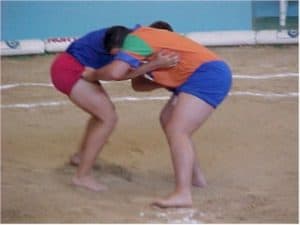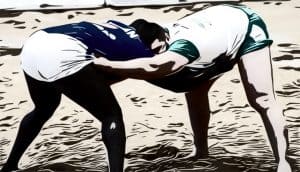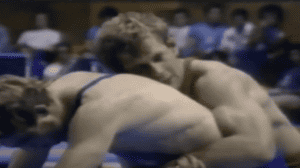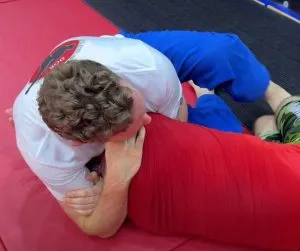As long as traditional sports go, Lucha Canaria also known as Canarian wrestling and Canary Island wrestling is one of the most prominent sports in the Canary Islands in Spain. The sport has gone through thick and thin, facing several ups and downs. But despite this, it still remains an identity and active part of the people.
It is a sport deeply rooted in history, passed down from generation to generation. And years later, the sport is still as alive and popular as it was centuries back.

Lucha Canaria was primarily practiced as a way to solve conflicts regarding societal issues. Whether it was about land or wealth, the sport helped resolve such matters. On the other hand, it was also practiced merely for fun and entertainment. And rather than muscular strength, the sport is more centered around skills, teamwork, and above all, nobility and virtue.
If you want to know more about this sport, you have come to the right place. In this article, we will look at everything you need to know about Lucha Canaria. So, let’s hop in.
Lucha Canaria: Origins and History
Lucha Canaria wrestling has been around since prehistoric times. We can see evidence from pintaderas, a type of stamp used by early natives of the Canary Islands. Initially, the sport featured three phases. A stone-throwing phase followed a stick /fighting fencing and, finally, the grappling bout. And only the grappling phase remains in the present day.
The Guanches, the earliest tribes of the Canary Islands, made this sport famous. Although it was present and practiced among all the natives, each island had different rules. This was due to limited contact or meetings between the different groups.
During the Spanish conquest in 1420, Alvar Garcia de Santa Maria brought several techniques and rules, such as the use of referees to oversee each match. However, only a tiny portion of these rules and regulations remain today.
Lucha Canaria was initially practiced to resolve conflicts between the tribes. They did this in a respectful manner without any ill thoughts. It was also a way for the young men to prepare themselves for tribal wars or ward off invasions. With time, the sport became a part of religious ceremonies.
The first concrete rules were laid down in 1872. Therefore, this makes Lucha Canaria one of the earliest established forms of wrestling. And during the early 1940s, the Spanish Wrestling Federation was formed, leading to the formation of the Federación Española de Lucha in 1984. This federation organizes annual regional and island competitions for Lucha Canaria.
The Development of Lucha Canaria
During the sport’s early days, particularly the historical period, competitors would cover themselves in lard to make gripping difficult much akin to what we see on Turkish Oil Wrestling. The folk era also featured no established rules and regulations. No team had a fixed number of fighters, or no region or town had limited teams, and so on.
And the style of wrestling, rules, grip, shapes, etc., differed from region to region. During this period, Lucha Canaria became a part of local festivals and events.
The institutional period during the early 1940s brought a change. It was during this era that Lucha Canaria earned its reputation as a competitive sport. The Canarian Wrestling Federation was born with provincial offices, all under the Spanish Wrestling Federation.

In 1947, two independent provincial federations were set up, i.e., one in Tenerife and one in Gran Canaria. They also brought in a new set of rules and regulations. These include 12 players per team and bouts between federated teams in regional and provincial competitions, etc.
Since then, much of the sport’s features have stayed the same. It is now a widespread sport and not strictly a part of the Canarian tradition. There is an independent Canarian federation based on the different islands with a standard set of rules and regulations.
Features of Lucha Canaria
Unlike traditional wrestling, which focuses on strength and ability, Canarian wrestling is more about the virtues and respect for one another. Of course, one needs the strength to take down their opponent. But in certain bouts, wrestlers require technical tricks and skills to knock down the opponent.
Fights often take place between big and well-built competitors. However, one does not need to meet these requirements to take part. You also need to be agile and smart to study your opponent’s weak spots and use them to your advantage.
Rules and Regulations of Lucha Canaria
- Every team consists of twelve wrestlers. They can be of different weight categories.
- The match takes place inside a sand circle, known as “terrero.” The circle consists of two concentric circles, each with a diameter of 15 and 17 meters, respectively.
- Every wrestler must wear “brega” clothing (struggle clothing) which includes a shirt and rolled-up trousers known as brega pants. The clothing is of rugged and tough quality to enable grappling and avoid tearing.
- Before the start of the match, the competitors engage in a friendly confrontation known as “agarrada,” meaning “to grab.” Then, they assume the brega position, which involves crouching at a 90-degree angle with legs bent halfway. The heads must lay side-by-side with the left hand grabbing the opponent while the right hand touches the ground.
- A match lasts three minutes without interruptions except for the referee. The winner is the first person to knock their opponent and make them touch the ground twice with any part of the body other than their feet.
- Wrestlers can use techniques called mañas to knock down an opponent. Punching, strangling, or hitting is not allowed during matches. We can divide mañas into three categories: deflecting, grasping, and blocking.
- You can only use your left hand to grab your opponent. If you change hands, it will be considered an infraction.
- If one wrestler pulls his opponent and forces them to the ground, it will be invalid. It is valid only if he falls inside the circle or touches the line. If one falls outside the line, it is also considered invalid.
- It is also traditional for the winner to help their opponent up and hug him after the match. This showcases the nobility of the fighters and the sport as a whole.
- You can be disqualified for many reasons. Some of them are if you do not position yourself appropriately at the start of the match, disrespect the referee, knock your opponent forcefully, etc.
Conclusion
Ever since its inception, Lucha Canaria has had periods of low and high. But the tradition is still alive as ever before. Instead of giving rise to conflicts, it has unified the people of the Archipelago to strive for a common goal. And that objective is to preserve this symbol which has become an essential part of Canarian identity.
Furthermore, it has undergone several developments over the years. It has a wide following even from the urban population, although most of the support still comes from rural communities. People make investments to improve the infrastructure, and it also attracts sponsors from the local folk.
With all this support, the future of Canarian wrestling looks promising, and we can expect more positives in the future.




